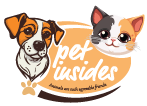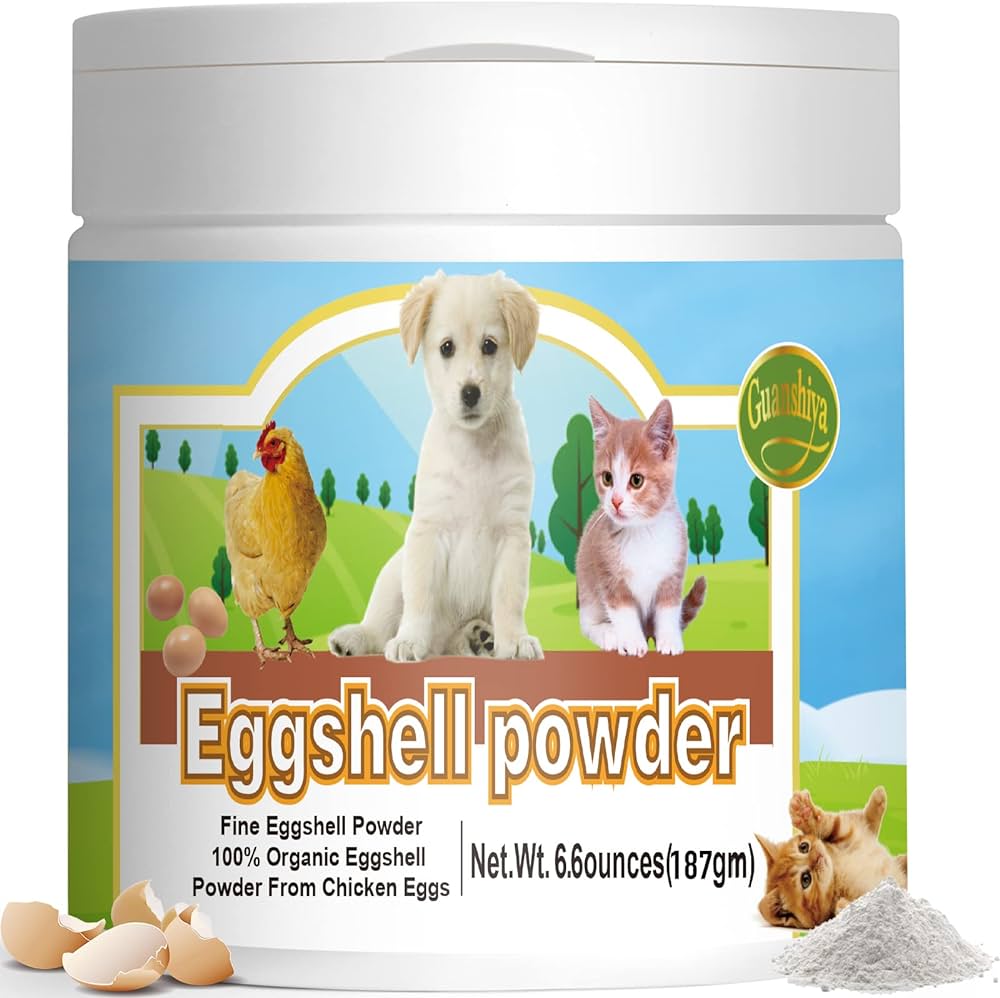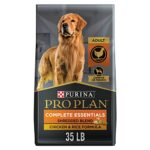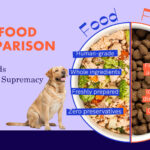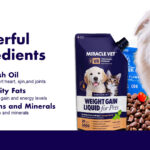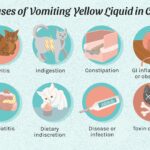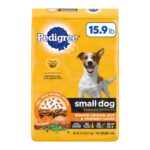Cat Food Bad for Dogs,Cat food is not specifically formulated for dogs and can lack essential nutrients that canines need. Consistent feeding of cat food to dogs may lead to nutritional imbalances.
Choosing the appropriate diet for your pet is crucial to ensure their long-term health and wellbeing. Dogs and cats have different nutritional requirements, with dogs being omnivores that rely on a varied diet, while cats are obligate carnivores. Feeding your dog cat food on rare occasions may not cause immediate harm, but it isn’t suitable for regular consumption.
High levels of protein and fats in cat food can contribute to canine obesity and other health issues if fed regularly. Dog owners should be aware of these differences and provide their pets with food designed to meet species-specific needs. Proper canine nutrition supports overall health, energy levels, and quality of life, making the choice of appropriate dog food an essential aspect of pet care.

Credit: www.amazon.com
The Risks Of Feeding Cats’ Food To Dogs
Many dog owners might wonder if sharing pet food between cats and dogs is okay. Sharing cat food with a dog may seem harmless, but it carries risks. This piece of content delves into why cat food isn’t a dog-friendly option.
Nutritional Imbalances
Dogs and cats have different dietary needs. Cat food often has higher levels of protein and fat than dog food. This suits cats but can lead to weight gain and other health issues in dogs if eaten regularly. Dog food is formulated with specific nutrients to ensure a balanced diet. Some of these nutrients are present in different quantities, or not at all, in cat food.
- Dogs need more fiber – which cat food lacks.
- Cat food is low in carbohydrates – not ideal for dogs.
- Excess protein from cat food can strain a dog’s kidneys.
Feeding cats’ food to dogs can result in a nutritional imbalance. This imbalance can lead to long-term health complications. Dogs might miss out on essential nutrients they need for a healthy life.
Possible Toxic Ingredients
Cat food can also include ingredients that are toxic to dogs. Certain human foods such as chocolate, grapes, and onions, are well-known to be dangerous for dogs. However, less known is that some of these ingredients may appear in cat food. Even in small quantities, they can harm your dog.
Watch out for these harmful ingredients:
| Ingredient | Possible Effects on Dogs |
|---|---|
| Onion or Garlic Powder | Anemia, digestive issues |
| Propylene Glycol | Heinz body anemia |
| Artificial Preservatives | Allergic reactions, cancer risk |
Please read the labels on cat food carefully if a dog is in the household. It’s safest to keep cat food out of your dog’s reach to avoid accidental consumption.
Understanding the dangers of feeding cats’ food to dogs is important for their health. Always provide species-specific food to ensure a happy and healthy pet.
Why Cat Food Is Irresistible To Dogs
Ever notice your dog eyeballing your cat’s meal with longing? There’s a good reason dogs often find cat food simply irresistible, and understanding these reasons might help you keep your canine away from your feline’s dish. Let’s take a closer look at two big factors that make cat food so tempting to dogs.
Higher Protein And Fat Content
Cat food packs a protein punch that dogs crave. Unlike dog food, which has a balance of nutrients suitable for a dog’s diet; cat food is richer in both protein and fats. Dogs, being natural carnivores, are drawn to this high-energy food. It’s like a fast-food burger: not the best daily choice, but oh-so-tempting.
Intense Aroma And Flavor
Cat food’s smell and taste often outshine dog food. Manufacturers craft cat food with an enhanced scent and robust flavor that appeal to cats’ discerning palates, but these same factors make it irresistible to dogs. It’s like walking past a bakery for them – the tantalizing aroma can be too much to resist!
Common Health Issues From Canine Consumption Of Feline Diet
Dogs sometimes eat cat food. It smells good to them. Cat food is not good for dogs. It can make them sick. Let’s see what health issues it can cause.
Gastrointestinal Upsets
When a dog eats cat food, their stomach can get upset. Signs include vomiting and diarrhea. This happens because cat food has more fat and protein than dog food.
- Too much fat: Upsets a dog’s belly.
- Rich protein: Hard for dogs to digest.
Watch for these signs if your dog sneaks cat food.
Long-term Nutritional Deficits
Eating cat food sometimes is not the biggest problem. But if a dog eats cat food a lot, it’s bad. They won’t get all the nutrients they need from their own food.
| Nutrient | Dog’s Need | Cat Food Content |
|---|---|---|
| Vitamin A | Less | More |
| Taurine | Can make their own | High |
| Arachidonic Acid | Less important | High |
Dog food has the right mix for dogs. Feeding them cat food can cause long-term health problems. They may lack important nutrients.
Identifying Toxic Ingredients In Cat Food
Your furry friends may share your home and heart, but not all their foods are shareable. While dogs may show interest in cat food, certain ingredients can be harmful to your canine companion. Learn to identify toxic elements hidden in cat food that could lead to unexpected visits to the vet.
Onion And Garlic Compounds
Onions and garlic contain thiosulphate, toxic for dogs. They can cause stomach upset or even anemia if consumed in large quantities. Scrutinize labels and avoid these ingredients:
- Allium species – Refers to both onion and garlic family
- Powders and extracts – Concentrated forms are especially dangerous
- Flavorings – Some may include onion or garlic oils
Artificial Preservatives And Additives
Cat food may sport a longer shelf life owing to additives that might not sit well with your dog’s digestive system. Artificial preservatives such as BHA, BHT, and ethoxyquin are frowned upon for canine consumption. These have potential health risks including allergies and cancer. Prefer brands with natural preservatives like vitamin E (tocopherol) or vitamin C (ascorbic acid).
| Preservative | Type | Risks |
|---|---|---|
| BHA | Artificial | Potential carcinogen |
| BHT | Artificial | Liver and kidney function affects |
| Ethoxyquin | Artificial | Can cause skin problems |
| Vitamin E (tocopherol) | Natural | None known at proper levels |
| Vitamin C (ascorbic acid) | Natural | None known at proper levels |
When Accidents Happen: Immediate Steps
Pets often sneak a taste of each other’s food. But what if your dog dives into the cat’s bowl? Not all feline food is good for your canine friend. It’s crucial to know the immediate response when such food mix-ups occur.
Assessing The Amount Eaten
First, don’t panic. Look at how much cat food your dog consumed. A small amount may cause minor issues, like an upset stomach. For large quantities, you need to act quickly. Create a mental note or jot down the amount. This information is vital for your vet.
When To Contact Your Vet
Signs to watch for include vomiting, diarrhea, and unusual lethargy. These symptoms are red flags. Grab your notes on the quantity ingested. Call your vet or an emergency pet hotline immediately. Swift action can prevent more serious health issues for your dog.
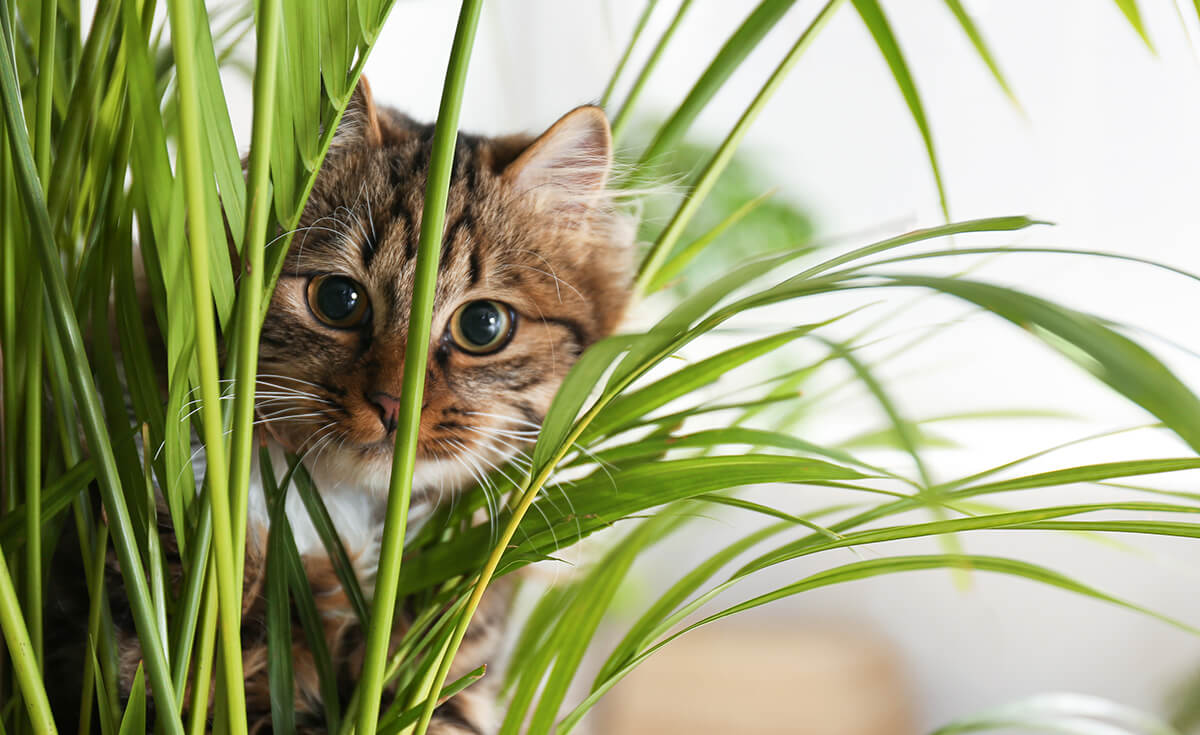
Credit: www.earthbornholisticpetfood.com
Preventive Measures To Separate Feeding
It’s crucial to know the right food for our furry friends. Cat food can harm dogs. This means we need steps to keep their meals separate. Let’s explore Preventive Measures to Separate Feeding.
Physical Barriers
Physical barriers work wonders. They keep dog noses away from cat dishes. Here’s how to set them up:
- Install a pet gate. Your cat can jump over while your dog stays put.
- Use a cat door. Install one into a room where only your cat can fit.
- Create a raised platform. Cats can climb; dogs often can’t.
Feeding Timers
Feeding timers can help. They ensure meals come out only when it’s the right pet’s time to eat.
- Set a timer for your cat’s food dispenser. This could be during the day.
- Have a separate timer for your dog. This might be set for a different time slot.
Separate Feeding Areas
Having distinct feeding zones avoids mix-ups. Here’s a simple layout:
| Feeding Zone | Location | Pet |
|---|---|---|
| Cat Zone | Laundry room | Cat |
| Dog Zone | Kitchen | Dog |
Remember to remove leftover food after mealtime. This ensures pets don’t snack from the wrong bowl.
Dog-friendly Alternatives To Cat Food
It’s important to feed our furry friends the right diet. Dogs accidentally munching on cat food is a common scenario. But cat food isn’t the best for dogs. They need their own canine-friendly meals.
Choosing The Right Dog Food
Selecting the proper food for your dog can make a big difference in their health and happiness. Let’s explore options that keep tails wagging:
- Check the labels: Look for whole-food ingredients without fillers.
- Breed-specific formulas: These cater to your dog’s size and energy needs.
- Life stage appropriate: Puppies, adults, and seniors have different nutritional needs.
Healthy Treat Options
Treats are a way to show love. Make each treat count with these healthy options:
| Dog Treat | Benefits |
|---|---|
| Carrots | Great for teeth, low in calories. |
| Green Beans | Fiber-rich, filling, low calorie. |
| Apple Slices | No seeds, vitamin-packed, freshens breath. |
Dog-safe commercial treats marked “natural” or “limited ingredients” are wise picks. Always avoid chocolate, grapes, and raisins as they are harmful to dogs. Feeding times are bonding times. Make sure your dog’s food and treats are not only safe but also beneficial to their well-being.
Essential Nutrients For A Dog’s Balanced Diet
Additional SEO meta tags here
Dogs thrive on a diet rich in certain nutrients. While cat food is formulated for felines, dogs have distinct nutritional needs. To ensure optimal health, a balanced diet is essential for any canine friend. Let’s delve into the components that make up a nutritious dog diet.
Protein
Protein is the building block for a healthy pup. It supports muscle growth and repairs tissues. Dogs should eat high-quality animal proteins like chicken, beef, or fish. Choose dog food that lists these as the first ingredient.
Fat And Carbohydrates
Fats give energy and keep the coat shiny. Carbohydrates provide fiber and energy too. Dogs need a blend of both for daily activities. Whole grains and vegetables are excellent carb sources.
| Fat Sources | Carb Sources |
|---|---|
| Chicken fat | Brown rice |
| Fish oil | Sweet potatoes |
Vitamins And Minerals
Vitamins and minerals support bone health, nerve function, and immune system. A high-quality dog food will include essential vitamins like A, B, C, D, E, and minerals like calcium and phosphorus.
- Vitamin A: for eyesight
- B Vitamins: for energy and metabolism
- Vitamin C: for immunity
- Vitamin D: for bones
- Vitamin E: for cell function
- Calcium: for bones and teeth
- Phosphorus: works with calcium
Interactive Feeding Toys To Distract From Cat Food
Cat food isn’t for dogs, but pups often disagree! While some ingredients might be harmful to dogs, using interactive feeding toys can keep your dog engaged and away from the cat’s dish. Let’s discover fun and healthy alternatives to keep your dog occupied and nourished.
Food Puzzles For Dogs
Food puzzles turn mealtime into playtime. These toys stimulate a dog’s mind and slow down their eating. This means no more snacking on the cat’s food! Here’s how food puzzles can benefit your pooch:
- Reduce boredom: Keep your dog busy for hours.
- Control eating habits: Slower munching means better health.
- Enhance problem-solving: They’ll think hard to get their treat.
Choose puzzles that suit your dog’s size and intelligence level. Start simple and level up as they become puzzle masters!
Slow Feeders For Better Digestion
Slow feeders prevent dogs from gobbling down their meals too quickly, which is better for their digestive health. Here’s why a slow feeder is a good idea:
| Benefits of Slow Feeders | How They Help |
|---|---|
| Prevents bloating | Makes dogs eat at a natural pace |
| Reduces choking risk | Controlled bite sizes |
| Encourages chewing | Better nutrient absorption |
Find a slow feeder that’s right for your dog’s breed and size. Make sure it’s fun shaped to peek their curiosity and appetite.
Recipes For Homemade Dog Treats
When it comes to our furry friends, we want the best for their health and happiness. Many pet owners don’t realize that cat food is not suitable for dogs and can actually harm them. This realization sparks interest in making homemade dog treats which can be both fun and beneficial for your dog.
Cooked And Raw Treat Options
Creating treats at home allows you to cater to your dog’s taste and dietary needs. There’s a variety of cooked and raw treat options that can suit any dog’s palate.
Let’s take a look at some simple recipes:
- Peanut Butter Cookies: Mix flour, oats, and peanut butter. Bake until golden.
- Chicken Jerky Strips: Slice chicken breast thinly, dehydrate or oven-bake.
- Beefy Bites: Cook ground beef, roll into small balls, refrigerate.
Raw options like carrot sticks or apple slices make for great snacks too!
Avoiding Harmful Ingredients
It’s crucial to know what’s safe for your dog to consume. Some common ingredients can be dangerous for them.
| Safe Ingredients | Ingredients to Avoid |
|---|---|
| Peanut Butter (Xylitol free) | Onions and Garlic |
| Pureed Pumpkin | Chocolate |
| Lean Meats | Grapes and Raisins |
Remember to double-check every treat’s contents, keeping your dog’s health in mind. Homemade treats ensure control over what your dog eats and can prevent the risks associated with harmful ingredients.
Commercial Dog Foods That Mimic Cat Food’s Appeal
Owners often wonder why their dogs crave cat food. Dogs may find the richer taste and higher protein content in cat food irresistible. Recognizing this, some pet food companies have developed dog foods that mirror the qualities of cat food, aiming to satisfy similar taste preferences while providing appropriate nutrition for dogs. Let’s explore some commercial dog food options that cater to this niche.
High-protein Dog Food Choices
Dogs need protein for energy and muscle maintenance. While cat food is too high in protein for dogs, there are dog food brands that offer balanced high-protein options.
- Real Meat First Ingredient – This guarantees a high-protein base.
- Grain-Free Formulas – These often have increased protein levels.
- Active Dog Blends – They feature a protein-rich composition for high-energy dogs.
It’s essential to pick a blend that matches your dog’s specific needs while keeping protein content in check. Here are a few popular choices:
| Brand | Protein Content | Primary Protein Source |
|---|---|---|
| Blue Wilderness | 34% | Chicken |
| Orijen Original | 38% | Turkey and Chicken |
| Canidae PURE | 32% | Fish or Lamb |
Palatable Flavors For Picky Eaters
Picky eaters may turn their noses up at traditional dog food flavors. Brands have taken note and are creating formulas with tastes dogs can’t resist.
Flavor enhancers, like natural broths, are common in these dog foods. Varied textures, such as including soft morsels with kibble, can also intrigue picky eaters.
- Savory Stews – Recipes that emulate hearty human meals.
- Gourmet Flavors – Think ‘doggie beef bourguignon’ or ‘chicken à la pooch’.
- Rotating Menus – Allows dogs to experience different flavors regularly.
Some brands catering to finicky dogs include:
- Wellness CORE – Offers a variety of flavors and textures.
- Merrick Grain Free – Features real deboned meat with fruit and veggie accents.
- Taste of the Wild – Delivers unique proteins like bison and venison.

Credit: www.usatoday.com
Understanding Canine Allergies And Sensitivities
When dogs eat cat food, they may face health risks. Cat food can trigger canine allergies and sensitivities. Unlike humans, a dog’s adverse reaction to food doesn’t always show right away. It’s crucial to know which ingredients may cause issues. Reading the labels and understanding what’s in your pet’s food is important for their health.
Common Food Allergens In Dogs
Dogs can be allergic to a variety of foods. Common allergens include:
- Beef and chicken – Proteins that often cause reactions
- Dairy products – Lactose can be hard for some dogs to digest
- Corn and wheat – Grains that may lead to skin irritation or gastrointestinal upset
- Soy – This plant protein can be problematic too
Recognizing the symptoms of allergies is key. Look out for itching, digestive upset, or chronic ear infections. These signs can indicate a food sensitivity.
Hypoallergenic Diet Switch
Moving to a hypoallergenic diet can help dogs with food sensitivities. This diet includes a limited ingredient list. It avoids common allergens and introduces new protein sources. For example, venison or duck instead of beef or chicken.
Steps for switching to a hypoallergenic diet:
- Consult with a vet for dietary advice.
- Introduce new food gradually over a week.
- Monitor your dog’s reaction to the new diet.
- Adjust portions based on your dog’s age, weight, and activity level.
Choosing the right food can make all the difference. Look for high-quality, balanced meals tailored to your dog’s needs. Always consider your vet’s recommendations when making a diet switch.
The Importance Of Speaking To A Veterinarian
When it’s about your furry friend’s diet, talking to a vet is crucial. Cats and dogs have different nutritional needs. Feeding your dog cat food regularly can lead to health issues. A vet knows best. They can guide you through the risks and give tailored advice for your dog’s health.
Dietary Recommendations
Veterinarians provide diet plans that match your dog’s needs. Dog foods are crafted to suit a dog’s digestive system. They offer the right balance of nutrients for canines. This is why cat food is a no-go.
- Cat food often has too much protein and fat for dogs.
- This can lead to obesity and other health complications in dogs.
- A vet can recommend dog-specific brands and portions.
Health Monitoring And Checkups
Regular vet visits help catch and prevent health issues. If your dog has eaten cat food, a vet can do a health check. They’ll watch out for signs of digestive distress or nutrient imbalance.
Preventative care is key for a long, happy dog life. Checkups allow for early action if a problem arises.
| Frequency | Focus |
|---|---|
| Every 6 months | Weight and diet review |
| Yearly | Bloodwork and physical exam |
| As needed | Response to dietary concerns |
Reach out to your vet with questions or concerns. They’ll make sure your dog maintains a healthy diet and lifestyle.
Converting From Cat To Dog Food: A Gradual Approach
Converting from Cat to Dog Food: A Gradual Approach
When switching your pet from cat to dog food, a slow and careful process is key. This helps prevent digestive upset and ensures a smooth adaptation for your furry friend’s system.
Mixing Foods For Transition
Boldly move toward the new diet by mixing both cat and dog food. A delicate balance is critical for a successful food transition.
- Start small: Include a little dog food with the familiar cat food.
- Ramp up gradually: Gradually increase the dog food ratio over several days.
- Keep consistent: Use regular feeding times to stabilize the change.
Remember, patience is key. The transition may take a few days to a week.
Watching For Behavioral Changes
Behavior is a window into your dog’s well-being. Close observation during dietary shifts is imperative.
| Behavioral Sign | Action Required |
|---|---|
| Lethargy | Slow down the transition. |
| Refusal to Eat | Consider flavor preferences. |
| Upset Stomach | Revert to more cat food briefly |
Keep an eye out for these changes and respond with sensitivity. Your dog’s positive response to the new diet ensures a happy, healthy pet.
Frequently Asked Questions Of Cat Food Bad For Dogs
Is Cat Food Harmful To Dogs?
Feeding dogs cat food occasionally is not toxic, but it’s not recommended for long-term use. Cat food lacks essential nutrients dogs need and can lead to nutritional imbalances.
Will Can Dog Food Hurt A Cat?
Feeding cats dog food occasionally won’t cause harm but isn’t recommended for regular meals, as it lacks essential nutrients cats need.
What Is In Cat Food That Makes Dogs Sick?
Cat food often contains higher protein levels and certain nutrients like taurine that dogs’ nutrition doesn’t require in large amounts, which can cause digestive upset or nutritional imbalances if dogs eat it regularly.
Can I Mix Cat Food With Dog Food?
Mixing cat food with dog food is not recommended. Cats and dogs have different nutritional requirements. Feeding them the appropriate food ensures their health and well-being.
Conclusion
To sum up, feeding cat food to dogs can lead to health issues due to differing nutritional needs. Always opt for dog-specific diets. Consult your vet for advice on suitable options. Remember, what works for cats isn’t ideal for canine companions.
Keep their meals appropriate and safe.
